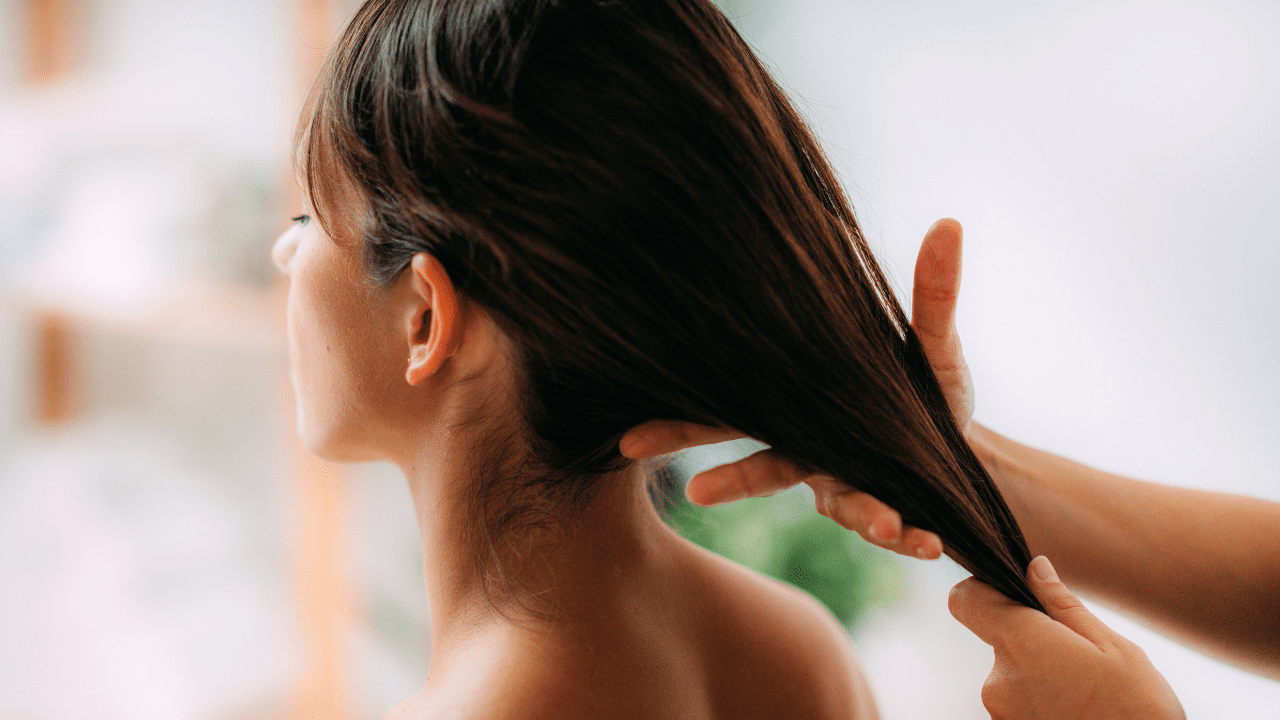Many people wonder, “Why does my hair grow so slow?” when trying to grow out a haircut, achieve long hair, or recover from hair loss. While it may seem like your hair has suddenly slowed down, hair growth doesn’t truly “slow.” Rather, your hair’s appearance of growth depends on a natural cycle involving active and resting phases. Disruptions to this cycle can make hair look as though it’s growing slower or even stopped altogether.
Understanding your hair’s growth phases and how to optimize them is key to achieving long, healthy hair. Here, we’ll explore what causes slow hair growth and give practical tips on how to support the natural cycle for your hair to reach its full potential.
Why Does My Hair Appear to Grow So Slow?
Hair grows in a cycle with two primary stages that affect its appearance: the growth phase (anagen) and the resting phase (telogen). At any given time, some hairs are actively growing, while others are resting and preparing to shed. If more hairs shift prematurely into the resting phase due to various factors, it can create the illusion of slower growth.
1. Genetics and Growth Cycles
Your genetic makeup is a primary factor in the length of your anagen (growth) phase. Some people have longer growth phases, resulting in faster-growing, longer hair, while others have shorter growth cycles, limiting how long their hair can grow before entering the resting phase. While we can’t change our genetics, we can maximize hair quality within the limits of our natural growth phase.
2. Aging and Hair Cycles
As we age, our anagen phase often shortens naturally, and we may also see fewer hairs in active growth. This phenomenon contributes to why hair might look as though it grows slower, especially compared to youth. Regular scalp care and proper nutrition become increasingly essential as you age to ensure your hair follicles remain active and healthy for as long as possible.
3. Nutritional Deficiencies and Hair Health
Poor nutrition can interfere with hair growth by interrupting the anagen phase, leading to more hairs in resting or shedding phases. Essential vitamins and minerals—such as biotin, iron, and vitamin D—support healthy hair growth. A lack of these nutrients could explain why your hair is growing so slow.
4. Stress and Its Impact on Hair
Stress, particularly chronic stress, can lead to conditions like telogen effluvium, where a higher percentage of hairs prematurely enter the resting phase. This sudden shift leads to visible thinning and slower-looking growth. Managing stress through practices like mindfulness, exercise, and self-care can help maintain a balanced hair cycle.
5. Scalp Health and Hair Follicles
A healthy scalp is essential for optimal hair growth. If your scalp is dry, clogged, or inflamed, it can hinder hair follicles from maintaining an optimal growth phase. This is particularly important for those with curly or afro hair, which may require specialized care to prevent dryness and buildup.
6. Overuse of Heat and Chemical Treatments
Frequent heat styling and chemical treatments can damage hair, causing breakage and splitting. When hair is fragile and prone to breaking, it may seem as though it’s not growing, even if it’s in the growth phase. Reducing heat and chemical use can allow hair to grow uninterrupted to its full length.
How to Support Your Hair’s Growth Phase
While you can’t increase the inherent speed of your hair growth, you can certainly optimize the growth phase to encourage longer, healthier hair. Supporting the anagen phase ensures that each hair strand can reach its full potential length and quality.
1. Maintain a Nutrient-Rich Diet
Providing your hair with essential nutrients is the foundation for healthy growth. Ensure your diet is rich in biotin, iron, vitamins A, C, D, and E, and protein. These nutrients strengthen hair at the follicle level, supporting a longer and more robust growth phase.
2. Focus on Scalp Health
Scalp health directly impacts your hair follicles’ ability to grow healthy strands. Gentle exfoliation, scalp massages, and using products free of harsh chemicals can help keep your scalp in good condition, allowing your follicles to thrive. Scalp massages, in particular, boost blood flow to the follicles, supporting an active anagen phase.
3. Reduce Stress Levels
Chronic stress disrupts your body’s normal processes, including the hair growth cycle. Relaxation practices such as meditation, yoga, or deep breathing can help reduce stress and encourage a healthier growth phase.
4. Use Minimal Heat and Chemical Styling
Excessive heat styling or chemical treatments like dyeing and relaxing can lead to breakage and weaken the hair strand, cutting short its growth potential. If you need to use heat, use a heat protectant and keep the temperature low. Minimizing chemical exposure will also allow your hair to grow longer and stay healthier during its growth phase.
5. Regular Trims to Prevent Breakage
While trimming your hair doesn’t speed up growth, it removes split ends, preventing them from traveling up the shaft and causing further breakage. With regular trims every 6–8 weeks, you’ll see healthier hair that retains more length.
Why Does My Hair Take So Long to Grow?
The hair growth process varies among individuals, often making it feel like it takes longer to reach the desired length. Factors such as diet, genetics, and hair care practices can contribute to this perception.
For example, afro hair or natural hair may grow at the same rate as other hair types, but the curl pattern can make it look shorter. Similarly, regular use of heated tools or damaging products can lead to breakage, which stunts overall length. Reddit and other online communities are filled with testimonials from individuals who have found success in maintaining a gentle routine, focused on nurturing their natural growth phase.
Myths About Hair Growth Speed
Sometimes, it can seem like your hair grows faster in certain areas or slower in others. Some people feel their facial hair grows faster than the hair on their head, or vice versa. In reality, your scalp’s follicles each follow their own cycle, resulting in hair lengths that vary. You may also notice differences in hair growth speed between different areas of your scalp due to follicle density and individual follicle cycles.
Can You Make Hair Grow Faster?
While you can’t change the biological rate at which your hair grows, you can optimize your routine to allow hair to reach its full potential. Here are a few ways to maximize your hair growth potential:
- Eat a balanced diet: Hair health starts with nutrition, so ensure your body has the building blocks it needs.
- Practice scalp care: Regularly cleanse and moisturize your scalp to support a healthy environment for growth.
- Manage stress effectively: Reduced stress can encourage more hair to remain in the growth phase.
Why Does My Hair Grow So Slow Male vs. Female?
Hair growth rates don’t significantly differ by gender, but men and women may experience different patterns of hair growth due to hormonal factors. For example, male pattern baldness and female pattern hair loss have distinct characteristics that affect how hair grows and sheds.
For men with slow-growing facial hair or those noticing a slowdown on their scalp, hormonal factors, diet, or lifestyle may be at play. For women, hormonal changes during pregnancy, menopause, or due to conditions like polycystic ovary syndrome (PCOS) can affect hair growth.
Conclusion
If you’re frustrated with slow-growing hair, remember that hair’s appearance of growth depends on a balance between growth and resting phases. Factors like diet, scalp health, and stress management all contribute to a healthy hair cycle that maximizes the length and quality of each strand.
At Alopecia & Beyond, we specialize in treatments designed to support and restore your natural growth phase, from scalp care and nutrition counseling to stress-reduction techniques. Book a consultation to learn more about how we can help you reach your hair growth goals and achieve the beautiful, healthy hair you deserve.




